Unlocking Advanced Roles in Applied Behavior Analysis
The transition from Registered Behavior Technician (RBT) to Board Certified Behavior Analyst (BCBA) represents a significant career advancement within the field of applied behavior analysis (ABA). While many professionals start as RBTs to gain foundational experience, becoming a BCBA involves additional education, supervised practice, and certification processes. This article provides a comprehensive overview of the pathway, requirements, timeline, and distinctions between these roles, helping aspiring behavior analysts navigate their professional journey.
Understanding the RBT and BCBA Roles: Foundations and Responsibilities
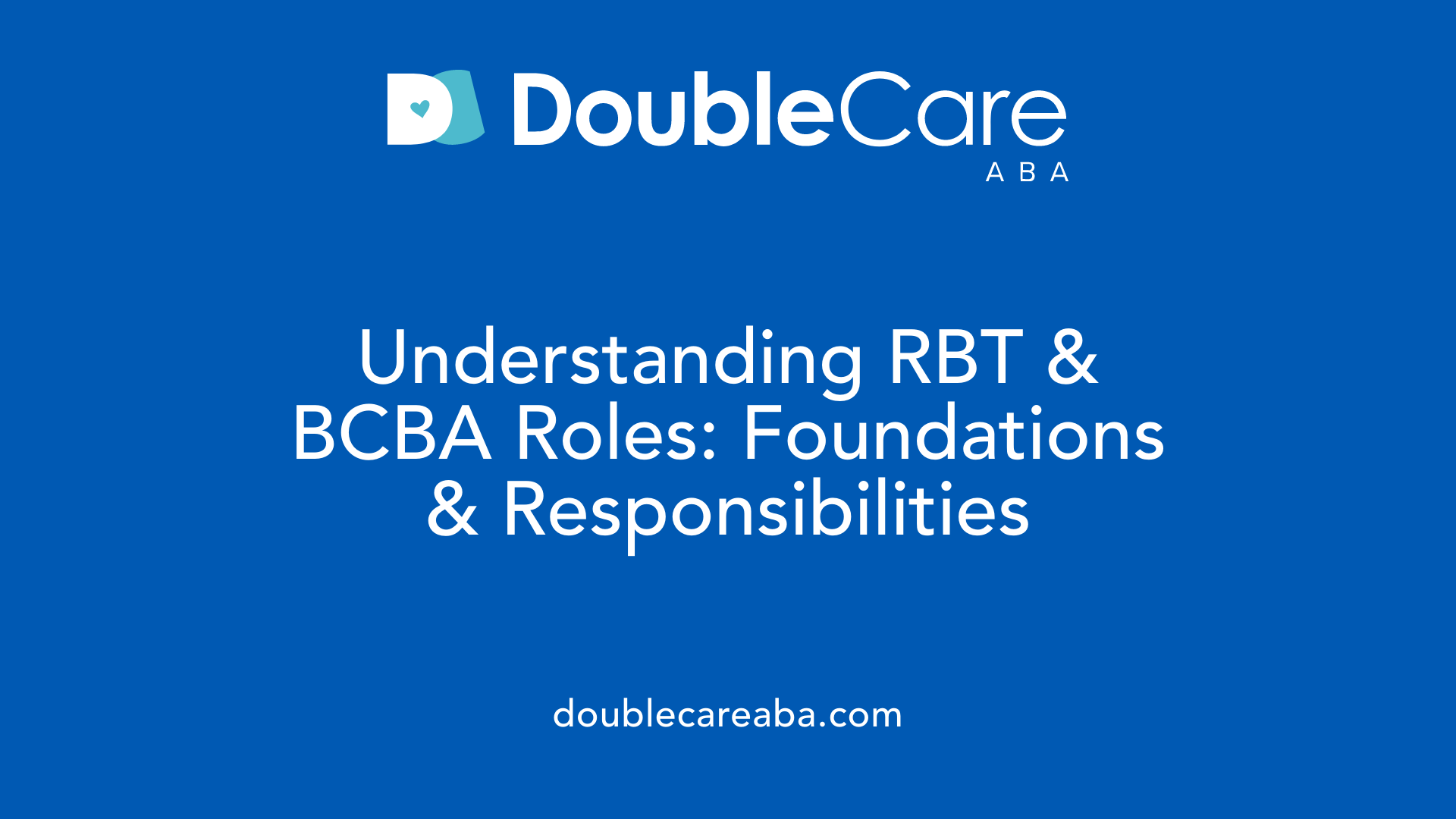
What are the roles, responsibilities, and credentials of RBTs versus BCBAs?
In the field of Applied Behavior Analysis (ABA), RBTs and BCBAs serve distinct but interconnected roles. Registered Behavior Technicians (RBTs) are paraprofessionals who work directly with clients, implementing behavioral strategies under supervision. To become an RBT, individuals must be at least 18 years old, hold a high school diploma, complete 40 hours of specialized training, pass a competency assessment, and obtain certification by passing a test administered by the BACB. RBTs are responsible for executing intervention plans, collecting data on client progress, and supporting behavioral goals.
Board Certified Behavior Analysts (BCBAs), however, are highly educated professionals with graduate degrees in behavior analysis or related fields. They hold advanced credentials that enable them to assess behavioral issues, develop tailored treatment plans, and oversee their implementation. BCBAs are responsible for conducting assessments, analyzing data, training RBTs, and making modifications to intervention strategies as needed. They work independently in various settings such as schools, clinics, and hospitals.
While RBTs focus primarily on execution and data collection, BCBAs are entrusted with designing and supervising behavioral procedures. This hierarchy ensures that interventions are based on sound analysis and ethical standards while allowing for direct client support through RBT services.
Roles and responsibilities of each role
| Role | Responsibilities | Education & Certification | Practice Authority |
|---|---|---|---|
| RBT | Implements behavior plans, collects data, supports clients | High school diploma, 40-hour training, BACB certification | Must work under supervision, cannot modify plans or assess |
| BCBA | Conducts assessments, designs treatment plans, supervises RBTs | Graduate degree, supervised experience, BACB exam | May practice independently, develops and oversees interventions |
This clear division of roles allows for a team-based approach to effective ABA therapy, with each role contributing unique skills within their scope of practice.
Credentialing and authority in practice
RBTs are certified paraprofessionals whose practice is strictly supervised. They cannot independently modify treatment plans or conduct assessments but can implement strategies and assist clients directly.
BCAAs and BCBAs, in contrast, are licensed professionals with authority to independently evaluate clients, develop treatment strategies, and supervise RBTs and other practitioners. Their certification involves ongoing continuing education, ethical adherence, and competency verification.
In summary, the distinction between RBTs and BCBAs lies in their level of training, scope of practice, and the authority they hold within the ABA process. Many RBTs use their foundational experience as a stepping stone toward earning higher credentials, including BCaBA and BCBA certifications, which open doors to independent practice and greater professional responsibility.
Educational and Experience Requirements for Transitioning to a BCBA
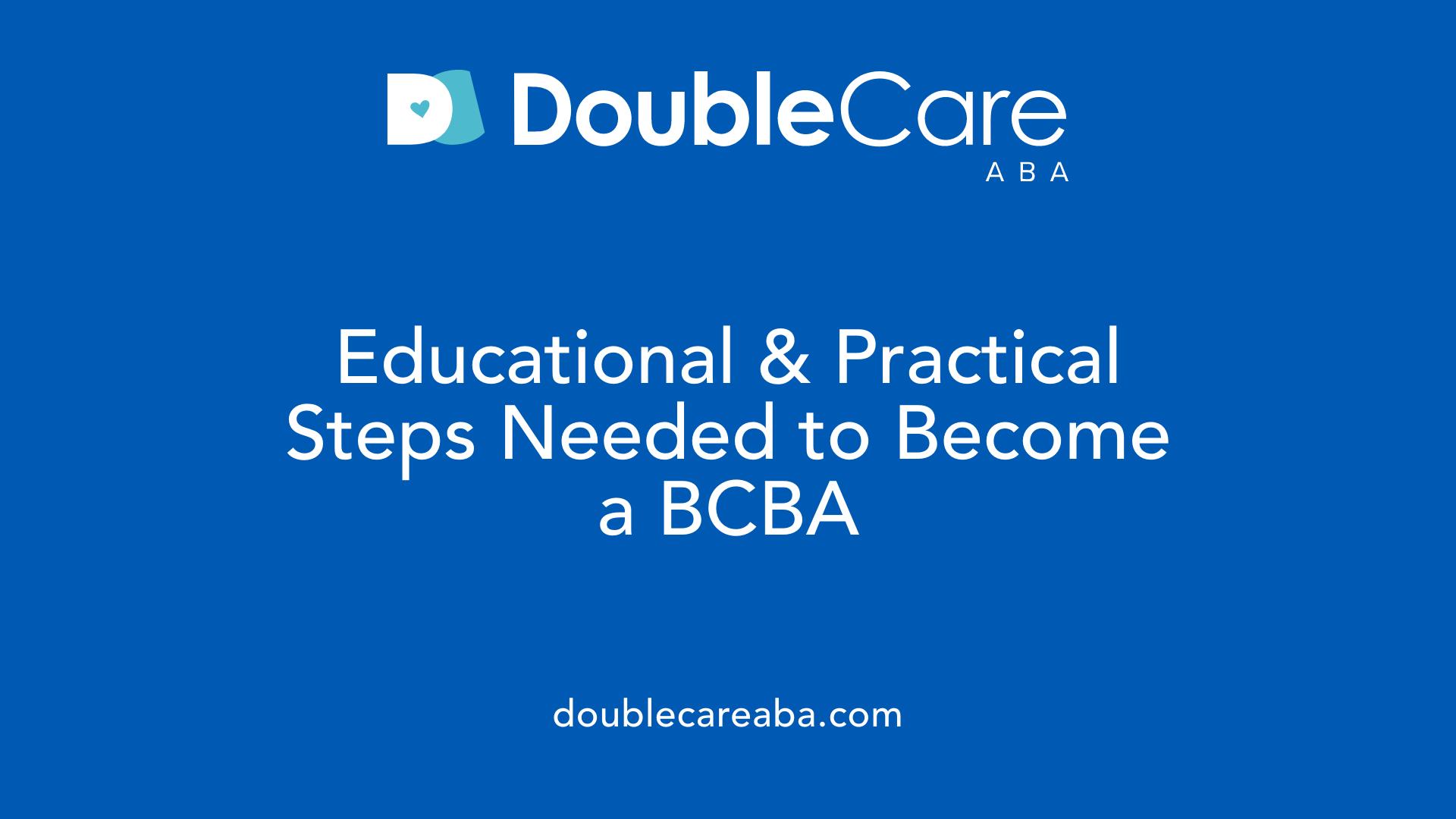
What are the requirements and qualifications needed to become a BCBA?
To qualify as a Board Certified Behavior Analyst (BCBA), candidates must hold a master's degree or higher from an accredited institution. The degree should include coursework approved by the Behavior Analyst Certification Board (BACB) that covers essential topics in behavior analysis.
Equally important is the completion of supervised practical experience. Candidates are required to accrue between 1,000 and 2,000 hours of supervised fieldwork. This hands-on experience must be gained under the guidance of a qualified supervisor aligned with BACB standards.
The certification process involves applying online through the BACB website. Applicants must submit documentation proving they meet educational and supervised experience requirements and pay an application fee.
Once the application is approved, candidates must pass a comprehensive certification exam. The exam, administered via Pearson VUE, consists of 160 multiple-choice questions covering various facets of behavior analysis.
Maintaining BCBA credentials requires ongoing professional development. Certificants need to earn at least 32 continuing education units (CEUs) every two years and adhere to strict ethical standards outlined by the BACB.
Educational steps including coursework and degrees
The pathway to becoming a BCBA begins with obtaining a graduate degree that includes specific coursework approved by the BACB. This coursework typically involves subjects such as behavior assessment, intervention, ethics, and research methods.
These academic programs are often structured to fulfill the 315-hour coursework requirement, covering core areas of behavior analysis.
In addition to coursework, students must complete supervised practical training. This combination of classroom learning and hands-on experience prepares candidates for the demands of the profession.
Supervised practical experience requirements
Supervised experience is integral to a BCBA's training. Candidates must complete approximately 1,000 to 2,000 hours of supervised fieldwork, depending on the pathway they choose.
The hours must be logged and documented carefully, as they constitute a critical part of the certification application process. Supervisors must be qualified BCBAs or equivalent, who ensure that practice aligns with ethical and professional standards.
This experiential learning involves activities such as conducting behavioral assessments, developing intervention plans, and monitoring client progress—always under the supervision of a credentialed professional.
| Step | Description | Additional Details |
|---|---|---|
| Master's Degree | Required for BCBA | Must be from an accredited institution with approved coursework |
| Supervised Fieldwork | 1,000-2,000 hours | Gained under qualified supervision according to BACB standards |
| Certification Exam | 160 questions | Administered via Pearson VUE, covering core areas in behavior analysis |
| Continuing Education | 32 CEUs every two years | For certification renewal, including ethics adherence |
This structured pathway ensures aspiring BCBAs are well-prepared to deliver quality behavior-analytic services independently.
Steps and Timeline to Move From RBT to BCBA
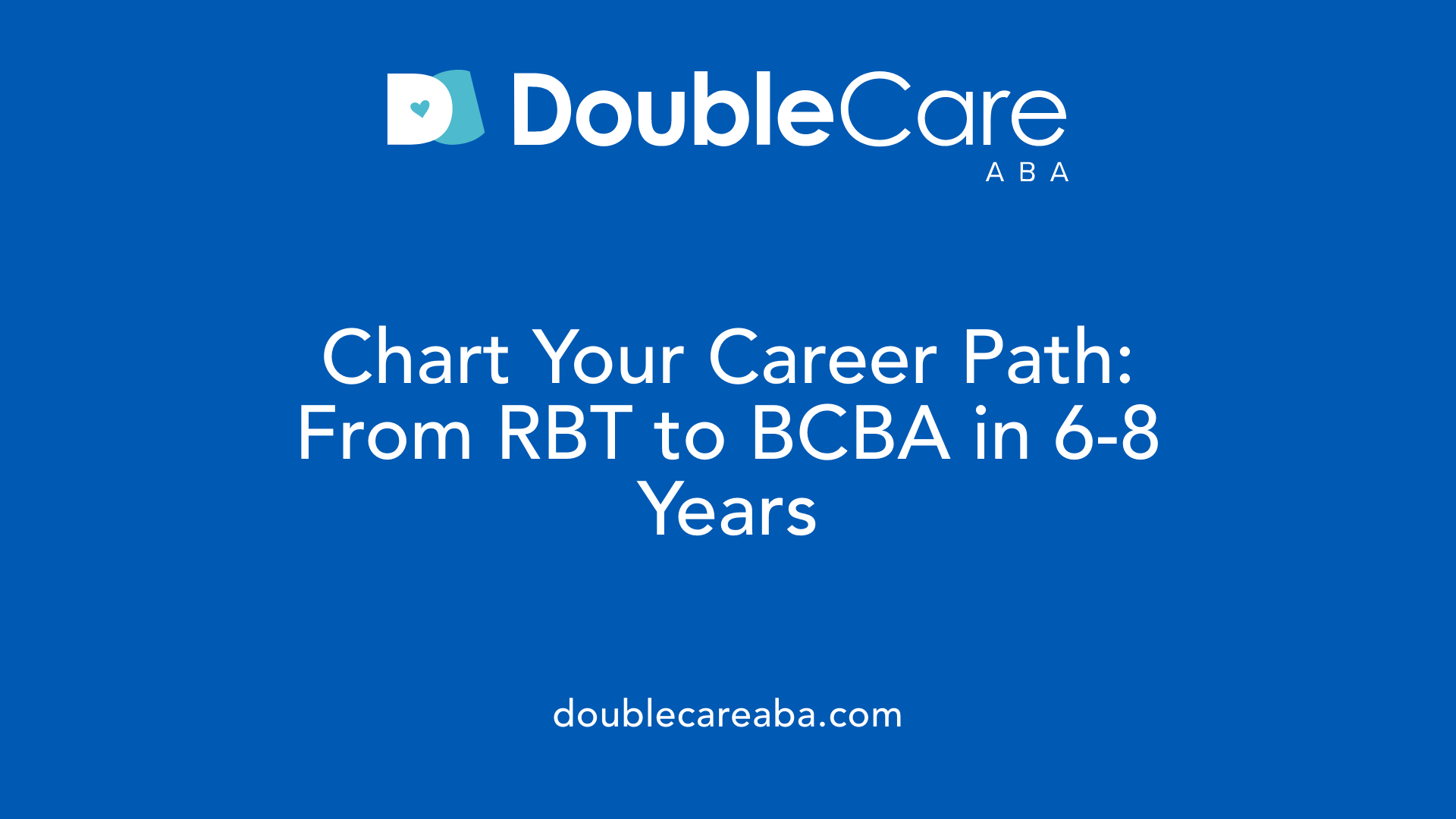
What is the typical timeline for career progression from RBT to BCBA?
Advancing from a Registered Behavior Technician (RBT) to a Board Certified Behavior Analyst (BCBA) generally spans about 6 to 8 years. The journey starts with obtaining a high school diploma or GED, which is the minimum education requirement to become an RBT. Subsequently, individuals complete a 40-hour training program and pass a competency assessment and certification exam to become certified RBTs.
The next stage involves earning at least a bachelor’s degree, which takes roughly four years. During this time, candidates also pursue coursework in behavior analysis approved by the BACB and accumulate supervised fieldwork hours. To qualify for BCBA certification, they typically need around 2,000 hours of supervised independent fieldwork, which can be completed over approximately a year.
Following education and supervised experience, the candidate applies for the BCBA exam. Passing this exam, which comprises 160 multiple-choice questions, signifies attainment of the BCBA credential. With certification, professionals can independently develop behavior intervention plans, supervise other practitioners, and primarily work in diverse settings.
Educational milestones and practical experience
The pathway from RBT to BCBA involves several structured educational and practical steps:
| Stage | Requirements | Duration | Details | |---------|----------------|---------|---------| | RBT Certification | 40 hrs training, competency assessment, exam | Few months | Entry-level certification to begin working under supervision | | Bachelor’s Degree | Typically 4 years | Undergraduate studies in psychology, education, or related field | | Graduate Coursework | 315 hours in behavior analysis | 1-2 years | Completing BACB-approved university coursework | | Supervised Fieldwork | 2,000 hours of experience | Around 1 year | Independent fieldwork and supervision to meet BCBA standards | | BCBA Certification | Passing the BCBA exam | Variable | Advanced certification allowing independent practice |
Each stage builds upon the previous, emphasizing both education and hands-on practical experience. Transitioning from RBT to BCBA is a rigorous process, demanding dedication but leading to a rewarding career in behavior analysis.
Additional considerations
While pursuing these milestones, professionals often attend workshops, conferences, and continuing education to stay updated with evolving practices and maintain certification compliance through ethical adherence and self-reporting. Many RBTs leverage their foundational experience as a stepping stone for further education and career development in the ABA field.
Educational and Training Pathways for RBTs Aiming for BCBA Certification
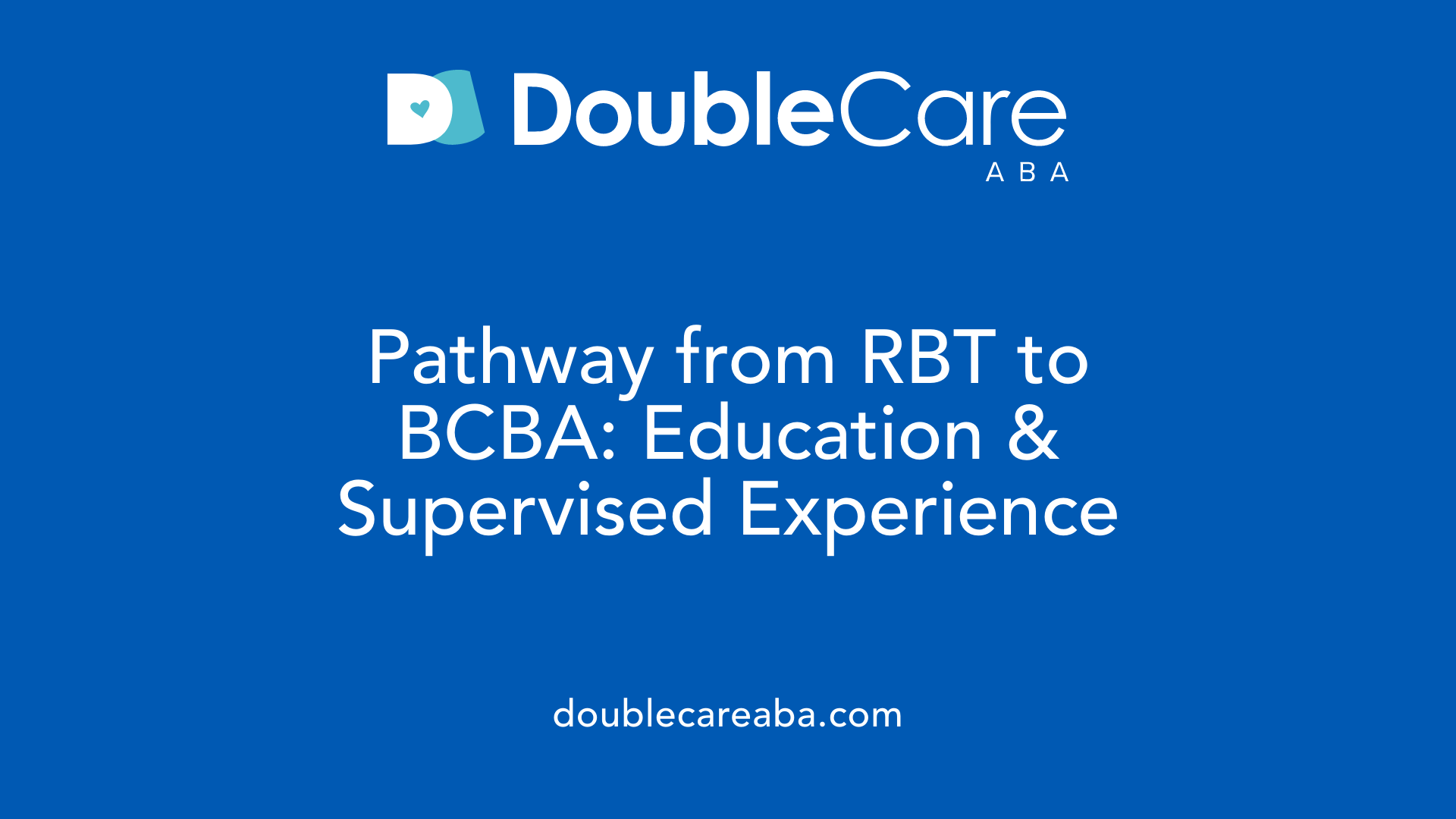
What are the educational and training steps necessary for an RBT to transition to a BCBA?
Moving from a Registered Behavior Technician (RBT) to a Board Certified Behavior Analyst (BCBA) involves several key educational and practical steps. The process begins with acquiring a graduate degree—either a master's or doctoral degree—in behavior analysis or a related field from an accredited institution. This academic pathway ensures the candidate has a strong foundation in the principles of behavior analysis.
Following the educational credential, applicants must complete a specified amount of supervised practical experience. For BCBA certification, this involves accumulating between 1,500 to 2,000 hours of supervised fieldwork. During this phase, candidates engage in critical activities such as conducting assessments, designing intervention plans, and training staff, all under the guidance of qualified supervisors who have completed additional training themselves.
Supervised activity benchmarks are strict; candidates need to document their hours meticulously to demonstrate compliance with BACB standards. Supervisors play a vital role, providing oversight and ensuring that practical experience aligns with professional requirements.
Once the required coursework and supervised experience are completed, candidates must pass the BCBA exam. This comprehensive test consists of 160 multiple-choice questions that assess knowledge across various domains of behavior analysis.
In addition to passing the exam, ongoing requirements include accumulating continuing education units, maintaining documentation of supervised practice, and adhering to ethical guidelines outlined by the BACB. These steps are necessary to ensure the professional growth and ethical practice of BCBAs.
While pathways such as completing BACB-approved coursework or engaging in postdoctoral training exist, they all adhere to the BACB's established guidelines. For RBTs considering advancement, the journey involves earning advanced education, accumulating relevant supervised practical experience, and successfully passing the certification exam.
| Step | Details | Additional Notes |
|---|---|---|
| Education | Master's or doctoral degree in behavior analysis | Must be from an accredited program |
| Supervised Experience | 1,500-2,000 hours of fieldwork in ABA | Includes assessments, program development, and training |
| Certification Exam | Pass the BCBA multiple-choice test | 160 questions, comprehensive coverage |
| Ongoing Certification | Continuing education, supervision documentation | Maintains certification through adherence to BACB standards |
This pathway reflects a structured approach for RBTs to advance towards BCBA certification, emphasizing education, supervised practice, and professional ethics.
Certification and Exam Procedures for Becoming a BCBA
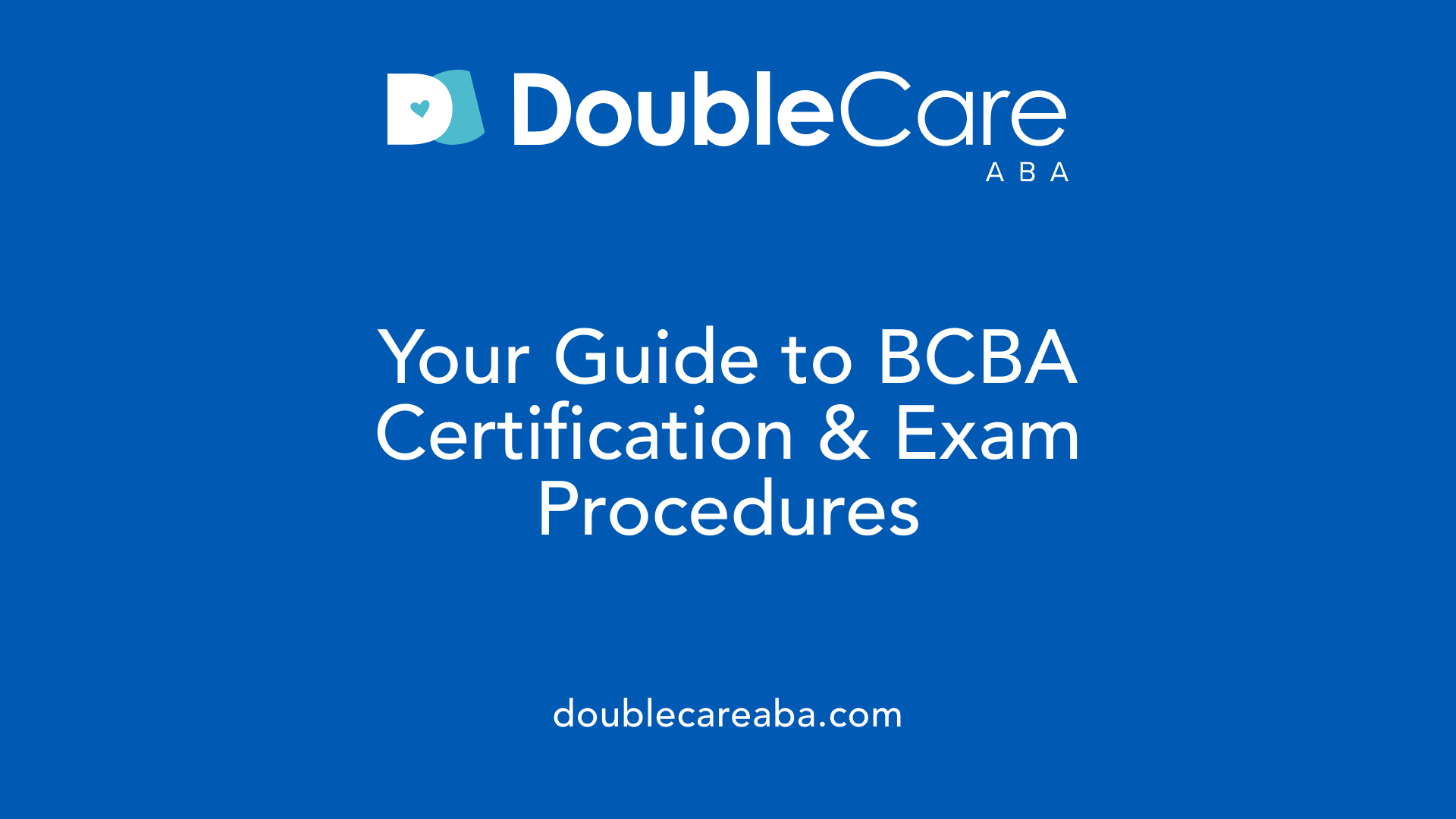
What are the certification and exam procedures for becoming a BCBA?
To earn the title of Board Certified Behavior Analyst (BCBA), candidates must go through a detailed application and examination process. Initially, applicants should carefully review the BCBA Handbook and ensure they meet all eligibility criteria. This includes holding a master’s degree from an accredited institution, with coursework in behavior analysis approved by the Behavior Analyst Certification Board (BACB).
Next, candidates need to complete between 1,500 and 2,000 hours of supervised fieldwork in applied behavior analysis. This practical experience must be documented thoroughly to demonstrate their competency in the field.
Once they have met these prerequisites, applicants submit an online application via their BACB account. This involves providing proof of their degree, coursework, and supervised experience, along with paying the required application fee. After submission, the BACB reviews the application, which usually takes a few weeks for approval.
Upon approval, candidates receive an Authorization to Test (ATT) letter, allowing them to schedule their exam. The BCBA exam is a comprehensive 4-hour computer-based test with 150 multiple-choice questions. It is administered at authorized Pearson VUE testing centers.
Candidates can schedule, reschedule, or cancel their exam through Pearson VUE, following their specific policies. Once they pass the exam, they are officially certified as BCBAs.
Certification maintenance involves completing continuing education units (CEUs) at least every two years and fulfilling recertification requirements, which include ethical conduct and ongoing professional development.
This process ensures that BCBA professionals are well-qualified to independently develop and oversee behavioral intervention plans, supporting the overall effectiveness of ABA services.
Post-Certification Career Development and Continuing Education

What are the ongoing certification maintenance requirements for BCBAs?
Maintaining a BCBA certification involves completing 32 Continuing Education Units (CEUs) every two years. These CEUs must include at least 4 hours focused on ethics and 3 hours specifically on supervision practices. BCBAs are responsible for self-reporting their completed CEUs and other professional activities through their BACB account before the recertification deadline.
In addition to continuing education, BCBAs must follow specific ethical and supervisory standards outlined in the BCBA Handbook. This includes keeping their contact information up-to-date and submitting renewal requests on time.
Failure to renew before certification expiration can lead to lapsing status, which might require reapplication, additional fees, and submission of documentation demonstrating ongoing competency.
Starting in 2027, certification renewal will also emphasize adherence to new pathways involving updated coursework and supervised fieldwork requirements. This shift underscores a broader commitment to lifelong learning and professional growth within the field.
| Requirement | Details | Purpose |
|---|---|---|
| CEUs | 32 every two years; at least 4 in ethics, 3 in supervision | Ensure ongoing professional knowledge |
| Ethical Standards | Ongoing adherence to BACB guidelines | Maintain integrity and professional conduct |
| Supervision & Practice | Continued supervision compliance | Promote quality service delivery |
| Renewal Timeline | Before certification expiry | Prevent lapsing and maintain credentials |
| Future Pathways | Updated requirements from 2027 | Foster continuous development |
Staying current through recertification and lifelong learning supports BCBAs in delivering effective services while advancing their careers and ensuring compliance with evolving standards in behavior analysis.
Advancing Your Career in Behavior Analysis
Transitioning from an RBT to a BCBA is a multi-faceted process that involves significant educational achievement, supervised practical experience, and certification success. While the pathway requires dedication and time—often spanning several years—it offers substantial professional growth opportunities, including independent practice, supervisory responsibilities, and specialization options. Whether starting as an RBT to build foundational skills or pursuing higher education directly, many find that the investment in advanced credentials ultimately leads to broader career prospects and a more profound impact in the field of applied behavior analysis. Continuing education and ethical practice are crucial for sustained success, ensuring that BCBAs remain at the forefront of evidence-based intervention and ethical standards. Aspiring behavior analysts should carefully plan their educational and experiential steps, leverage online learning options, and stay committed to lifelong learning to reach their professional goals.
References
- 7 FAQs for RBTs Pursuing BCBA or BCaBA Certification
- ABA Certification Explained: RBT, BCaBA, BCBA, BCBA-D
- How Do I Go From RBT to BCBA? A Guide - All Star ABA
- Can an RBT Become a BCBA? (The Requirements) - Elemy
- RBT to BCBA | Autism Resources - Songbird Therapy
- RBT vs. BCBA Career Paths - School of Education - Drexel University
- BCBA vs. BCaBA vs. RBT: Explaining the Differences - AutismCOE
- What Is the Difference Between BCBA and RBT?















